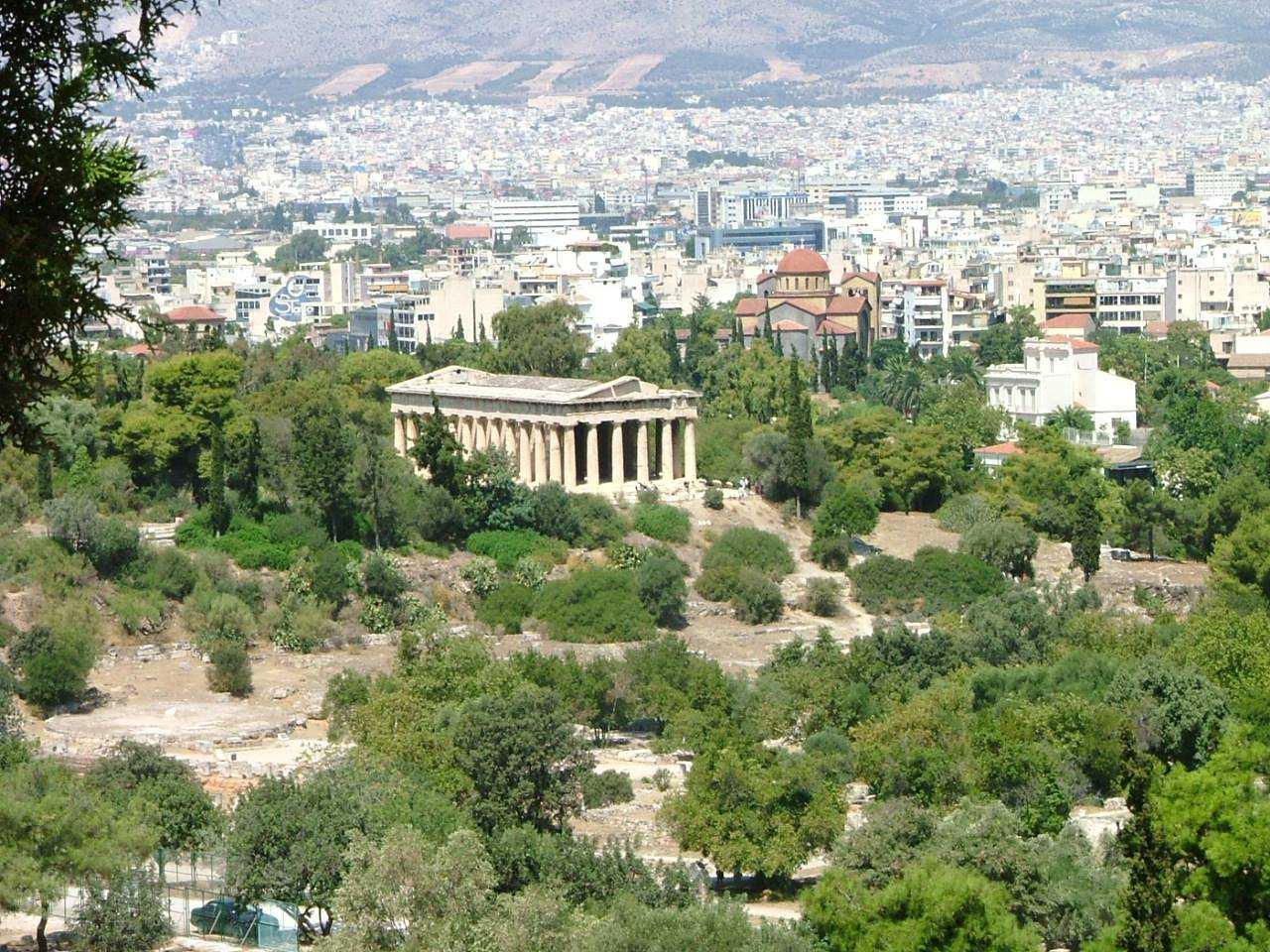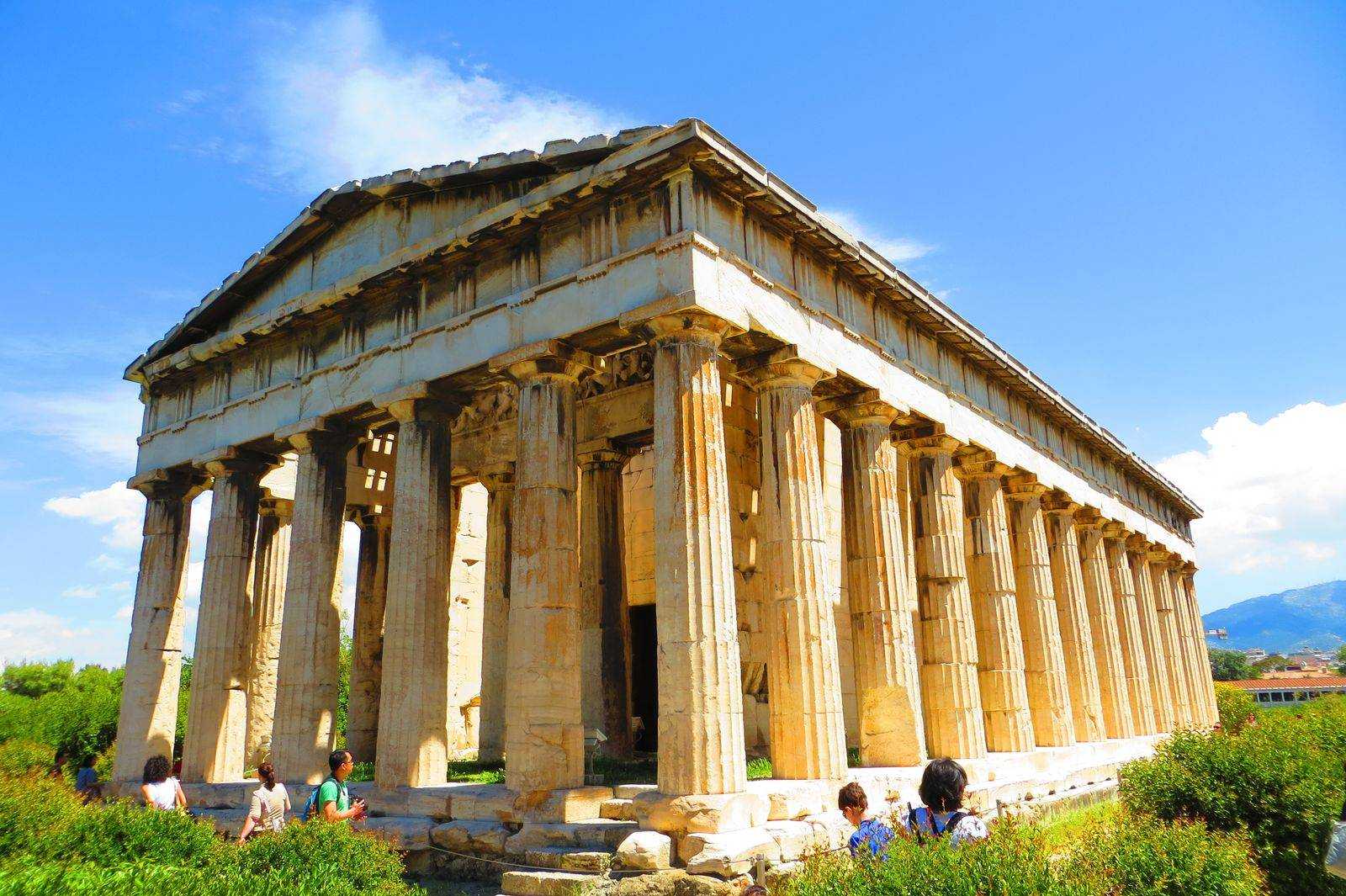The Temple of Hephaestus, a well-preserved Greek temple, stands tall on the Agoraios Kolonos hill, overlooking the ancient Agora of Athens, Greece. This magnificent structure, dedicated to Hephaestus, the ancient god of fire and metalworking, is a testament to the architectural prowess of the ancient Greeks and continues to captivate visitors with its grandeur and historical significance.
Get your dose of History via Email
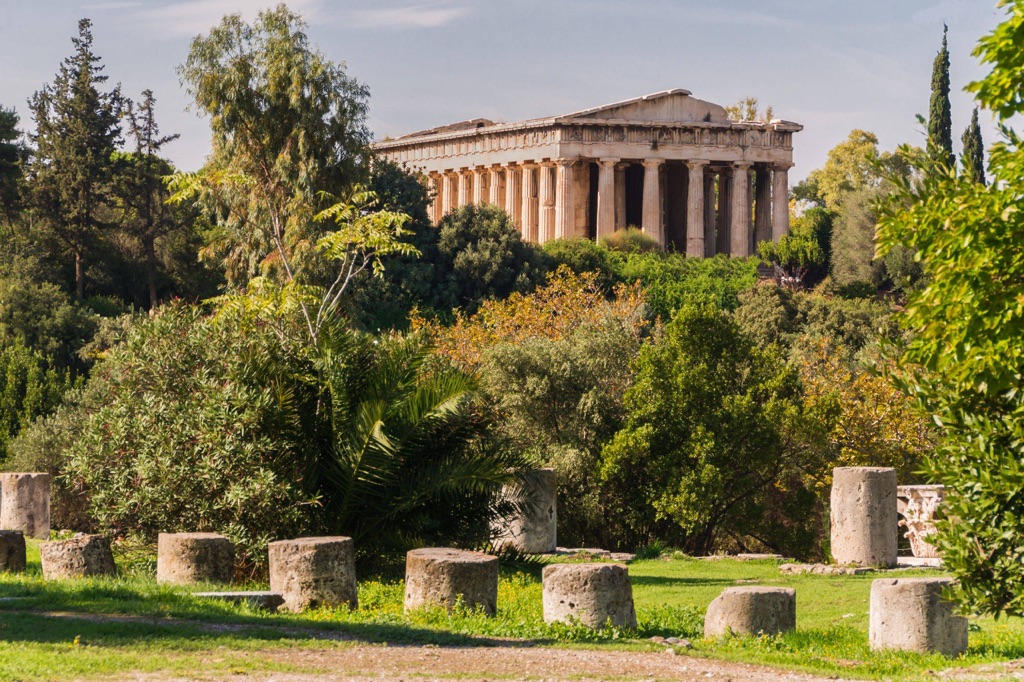
Historical Background
The Temple of Hephaestus was constructed between 449 BC and 415 BC, during the peace of Pericles, a period of relative tranquility in Athens. It was built under the direction of the architect Ictinos, who also contributed to the construction of the Parthenon. The temple was dedicated to Hephaestus, the patron god of metal workers and craftsmen, and Athena Ergane, the goddess of crafts and industry. This was a fitting dedication, considering the Agora’s role as a bustling center of commerce and trade.
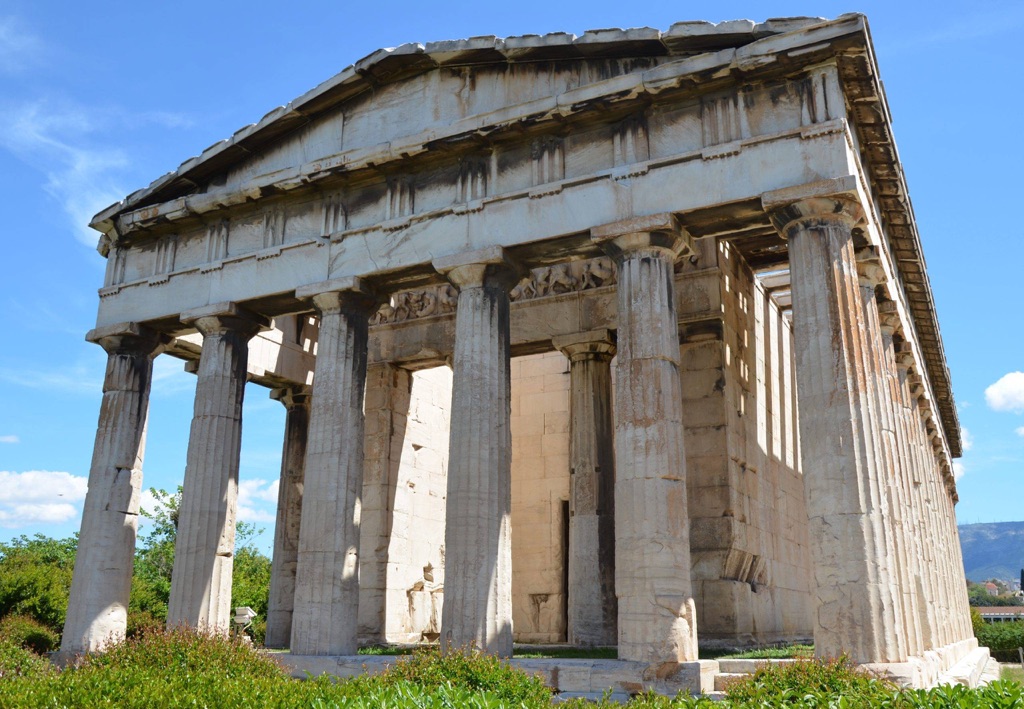
Architectural Highlights
The Temple of Hephaestus is a Doric peripteral temple, meaning it is surrounded by a single row of columns on all sides. It measures approximately 31.77 meters in length and 13.72 meters in width. The temple is made of Pentelic marble, the same material used in the construction of the Parthenon, and features 34 columns, each standing at 5 meters high. The frieze, a decorative band running around the exterior of the temple, depicts the labors of Heracles and Theseus, two heroes from Greek mythology. The temple’s interior once housed statues of Hephaestus and Athena, crafted by the renowned sculptor Alcamenes.
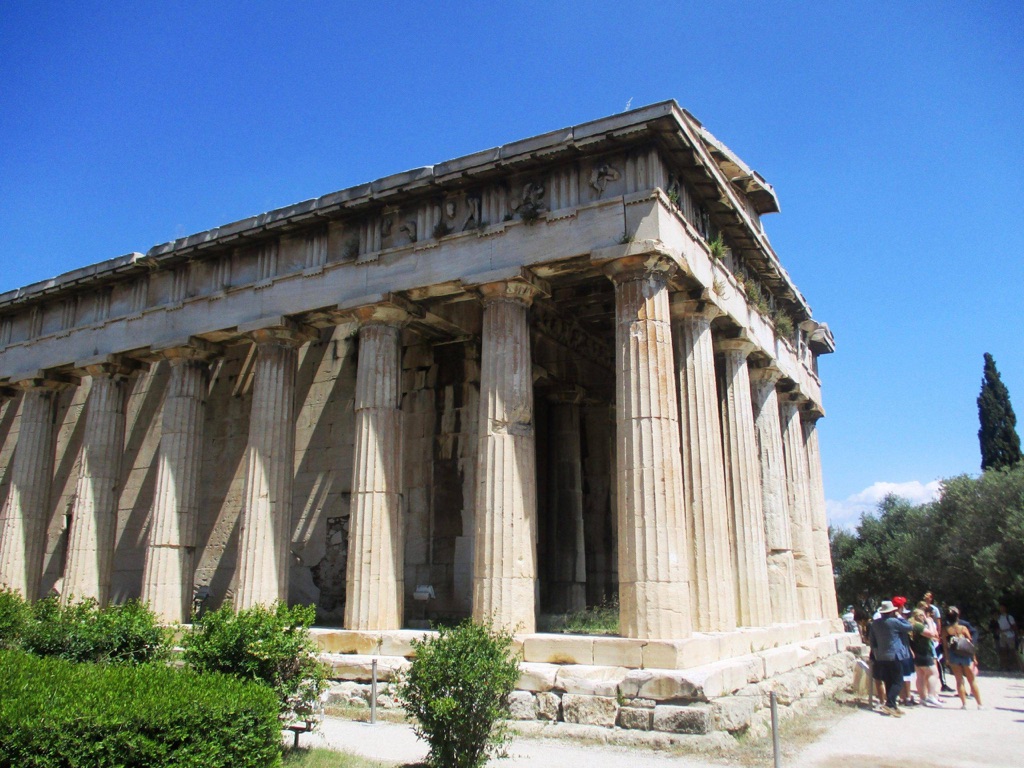
Theories and Interpretations
While the primary purpose of the Temple of Hephaestus was religious worship, it also served as a cultural and social hub. The temple’s location in the Agora, the heart of public life in Athens, suggests that it was a focal point for gatherings and discussions. Some scholars believe that the temple may have also served as a treasury or a storehouse for the various artisan guilds in Athens. The dating of the temple has been confirmed through historical records and stylistic analysis of its architectural elements.
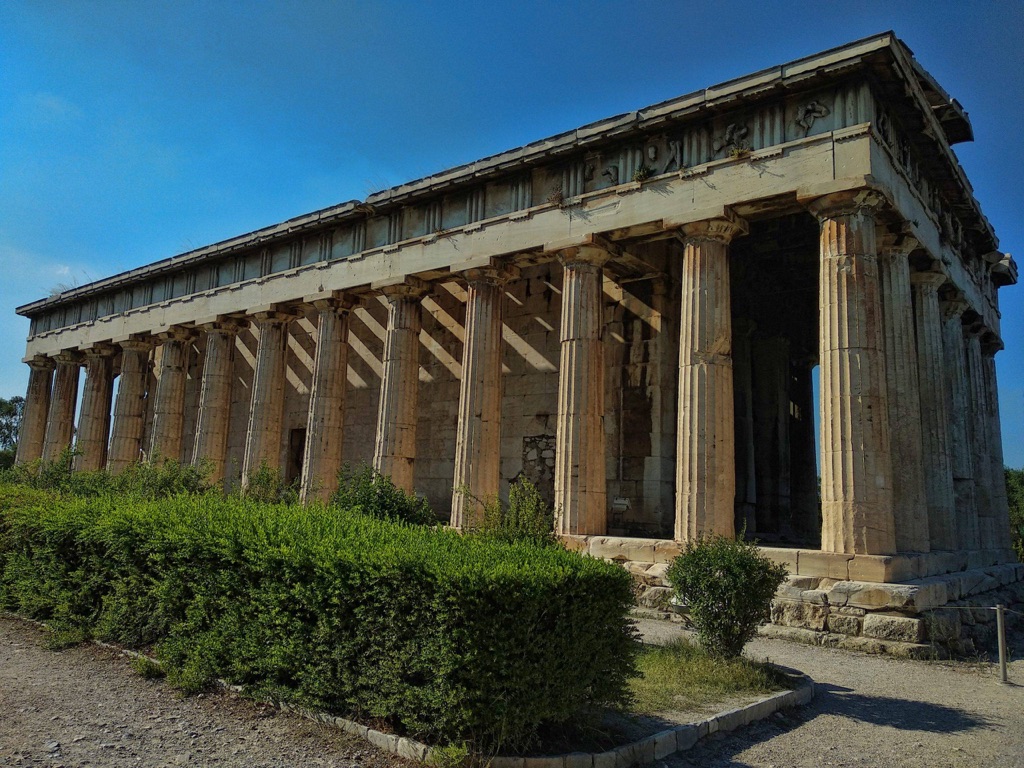
Good to know/Additional Information
Interestingly, the Temple of Hephaestus is one of the best-preserved temples of the ancient world. Unlike many other ancient structures, it remained in use for various purposes throughout the centuries. In the 7th century AD, it was converted into a Christian church dedicated to Saint George. During the Ottoman occupation, it served as the official Greek Orthodox church. In the 19th century, it was used as a museum before being restored to its original form. Today, it stands as a proud reminder of Athens’ rich history and cultural heritage.
